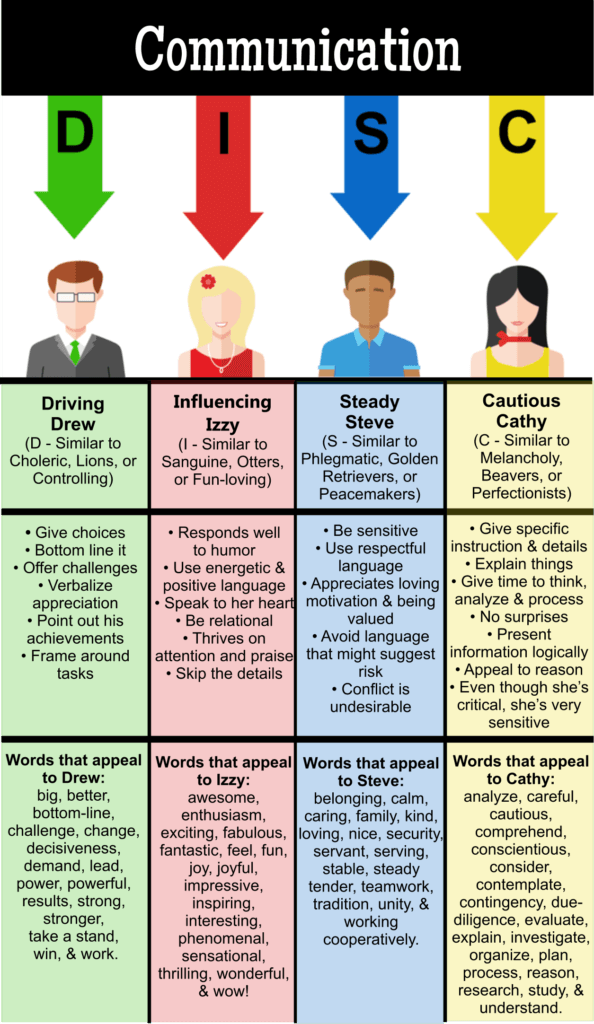How to Communicate Like a Pro!

It’s rare to meet anyone who has truly mastered the art of communication, even though communicating is something you do every day. For some, drafting an articulate letter or email comes easily, but being able to think on your feet and express yourself well verbally is tough! For others, it’s the other way around. Some are real pros at public speaking while sharing their heart is a whole different story.
Even the best communicators experience snags! Emotions, timing, fear, insecurities – they all contribute to making communication complicated. Who hasn’t been haunted by the inability to rewind your words, written or otherwise?
Communication is caught more than taught, and our examples haven’t done us any favors.
It’s tempting to talk too much in an attempt to communicate and inundate the other party or parties with words, or to shy away from speaking at all just to avoid saying the wrong thing. Learning wise ways of communicating is beneficial personally and professionally.
I bet you know what it’s like to try to work after a conflict with your spouse or someone close to you. It affects your focus at work. And poor communication in the work place can be unpleasant as well!
Did you know that when communication is effective in the workplace, there’s less conflict, fewer misunderstandings, greater engagement, increased productivity, not to mention it makes for a much, much, more positive work environment?
As a leader, how you communicate trickles down. And if you aren’t the leader, it doesn’t mean that you can’t be influential when it comes to modeling amazing communication!
Embarking on a radical communication overhaul is overwhelming! So while I have 13 communication tips for you today, don’t try to master them all at once. Instead, focus on one at a time, moving on to the next when you are ready. It will lead to communication improvements that stick!
Without further ado…here are my 13 communication tips for you:
1. Listen!
Communicating well begins when you are able to listen; truly listen. Not formulating your response or rehearsing all you want to say. It’s about catching what’s not being said, the emotions behind the words, and then checking that you understand. Often conversations go south because you assume you know what the other person is trying to say. Your filter, your beliefs, might cause you to read into, or misinterpret what’s being said in unhelpful ways.
2. Avoid VOIDS!
Putting off responding to emails, phone calls, etc. creates a communication void and voids are never, never filled with positive feelings. Even if you don’t have the time to respond in detail or you can’t attend the meeting, a quick note will go a long, long way towards keeping a positive vibe between you, those you lead, do business with, or have personal relationships with!
Another important void to avoid: the vision void. Share the vision frequently. Relate the activities you are engaged in back to that vision. Help your people to see how what they do contributes to the vision. You will be pleased to see how it keeps everyone more focused.
3. Practice Being Polite
It seems pretty basic, but simple niceties like smiling, make eye contact, acknowledging others as you pass them in the hallway, saying please and thank you, makes for a much more positive environment! It communicates a whole lot! And of course, whenever possible, resist the urge to interrupt – that’s tough for some personalities!
4. Adjust
We don’t all communicate the same way. As a leader, it’s your job to adapt to those you lead. The ability to adapt makes a positive difference even when you aren’t the leader!
When it comes to how different personalities communicate here’s a few things to keep in mind:

Your thinking preference also impacts the way you communicate. Learning to “walk around the brain” and communicate in all four quadrants will improve your ability to appeal to all of the thinking preferences. And it’s a great guide to help you cover all the bases when communicating in a variety of situation including meetings, marketing, presentations, sales and more!

5. Set Expectations & Follow Up With Feedback!
Leaders often complain about how their people are not achieving what they want them to. There are times where employees or those you lead will let you down, but most of the time your people want to get it right. In order for them to get it right, you must set clear expectations up front – a target that you both are clear on. Setting clear expectations also makes it easier to follow up because you have something concrete to refer back to. Then you can provide feedback with the specific ways your expectations were exceeded. You can also share feedback around where your expectations weren’t met.. Don’t forget, feedback is not just negative. People need to hear the good stuff too!
6. Ask Questions
Stop having all the answers! I know it feels good to be that kind of resource, but in the long run you’re keeping your people dependent on you rather than developing them. When possible, ask them questions to get them thinking. Help them to see what needs to be considered. They might even come up with ideas that you’ve never considered; better ideas! If that’s the case and since we’re talking about communication – be sure to give them credit!
7. Request Feedback
Ask your people to give you feedback. It’s a great way to cultivate a culture where feedback is normal and beneficial!
8. Address Issues ASAP
Nobody likes confrontation, yet when issues are left unaddressed, they rarely go away – they get worse! Don’t let issues linger or save them all up for the next one-on-one or yearly review.
Here’s how to handle those sticky situations more effectively by using SBI (Situation, Behavior, Impact):
- Share the SITUATION – This gives context so the other person knows what you are referring to.
- State the BEHAVIOR – Something you observed yourself, and if at all possible, state it in measurable terms.
- Describe the IMPACT: This is an “I” statement about how the behavior has impacted you or others.
Wrap it up by setting expectations around what you’d like to have happen in the future or depending on the situation, come up with a strategy together to address the issue.
For example: Your sales presentation this morning fell flat. You made it interesting by adding humor, but 3-4 persuasive facts were needed for impact to help close the sale. I believe if you make this adjustment in the future you will have a better chance of landing the deal and we can reach our sales goals. Can you spot the S, B, & I?
9. Initiate Discussion / Debate
Hashing out the solutions to challenges together in a collaborative way leads to superior solutions. Don’t shy away from a healthy discussion and exploration. You may even want to challenge your people to argue both sides. Just be sure to agree on some safe rules before the debate.
10. Use Appropriate Channels
Some topics are best dealt with face to face or by phone – not email, Slack, Skype IM, or text. Don’t make the mistake of trying to tackle delicate topics the easy way.
11. Establish a Communication Rhythm
It’s important to resolve issues along the way and it’s important to have a communication rhythm that your people can count on. That’s where one-on-ones and yearly reviews, etc. come in. They provide opportunity to discover the dreams and goals of those under your leadership so that if possible, you can provide them with work they will be truly excited about. It’s also a chance to set expectations and give feedback around the work they are doing AND a chance for them to share feedback with you. These meetings have the potential to strengthen your relationship, boost productivity, and create loyalty. Cancelling or putting these meetings off communicates powerfully as well!
12. Pause
Some of you process slower than others; and some issues require more thought. It’s OK to put on the breaks and simply say, “I need some time to think before I respond.”
13. Brevity is Best
When communicating, less is more. It’s tempting to go on and on, especially when attempting to deal with a touchy matter. Yet, the more words you use, the more likely you are to say something that will get you in hot water. Whenever possible, resist the urge to over explain. Short and sweet is best! One more reason to use SBI!
Which communication tip will you start practicing?
© Can Stock Photo / DeziDezi

Great article Marvae. Very helpful in analyzing my own communication style and finding those points in which I need to work. I will definitely be evaluating how I communicate with those who serve with me.
Hi Dustin – Thanks for letting me know the information was helpful. Praying that God enables you to communicate in a way that is effective and honors Him.